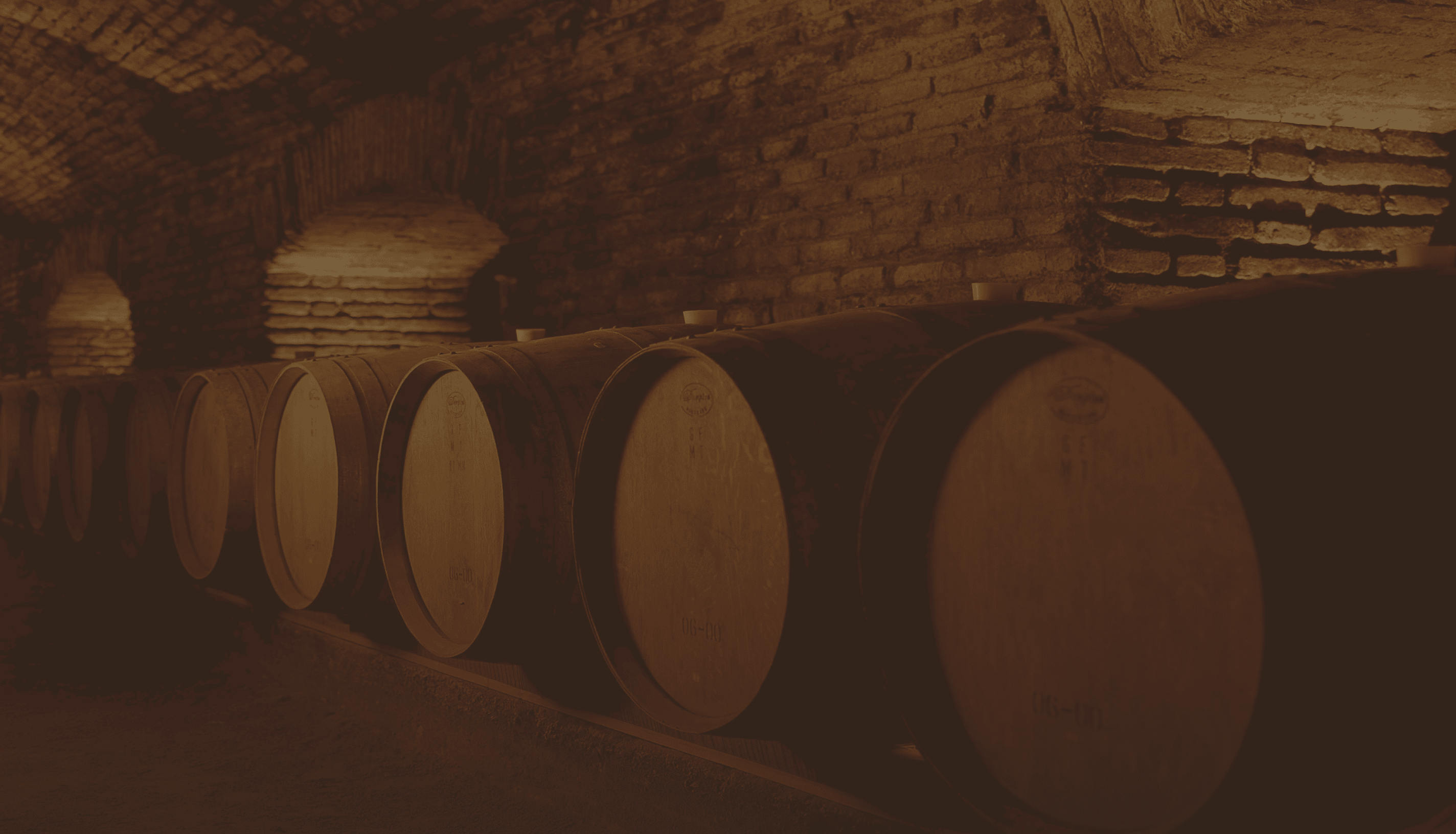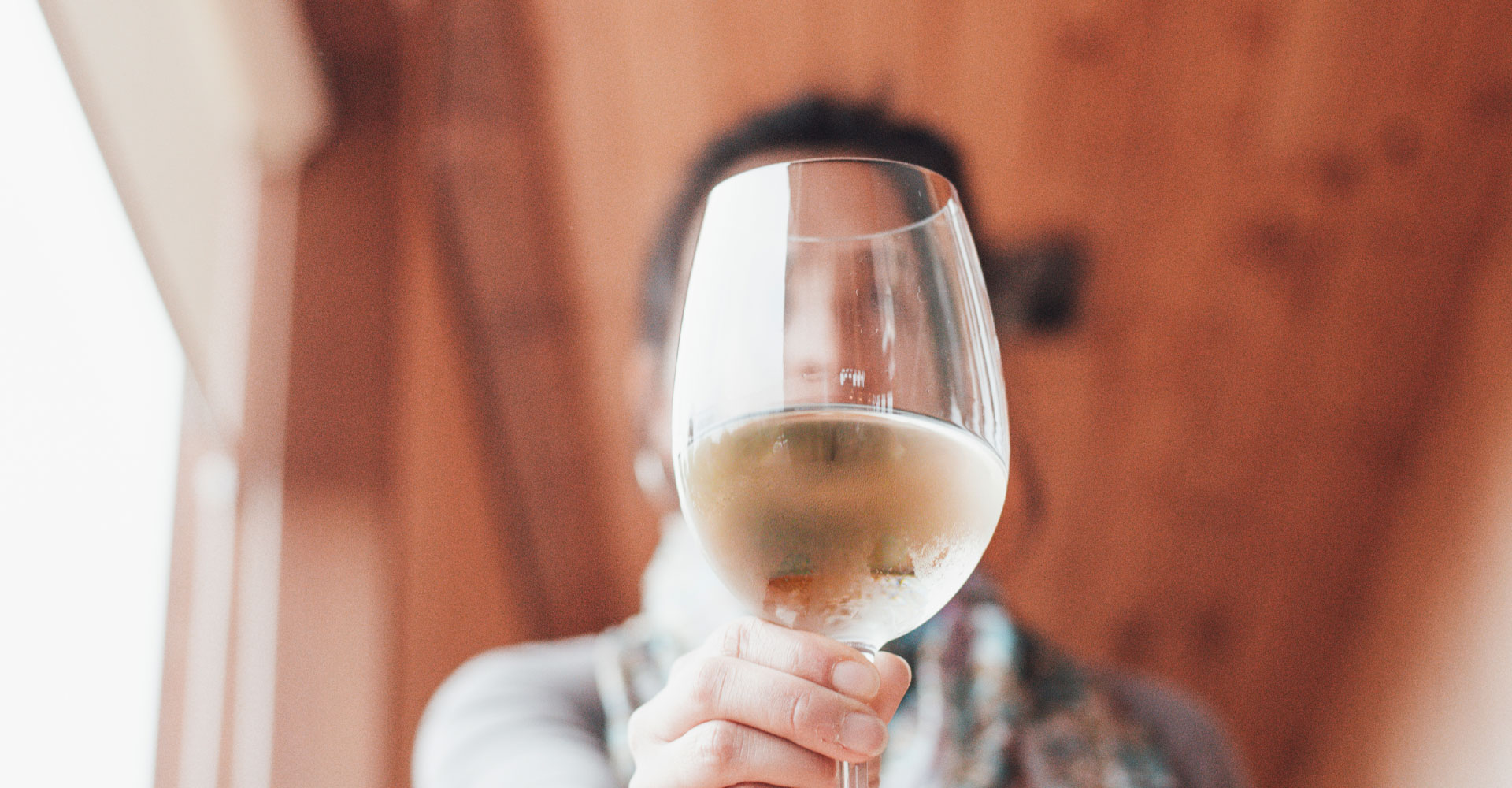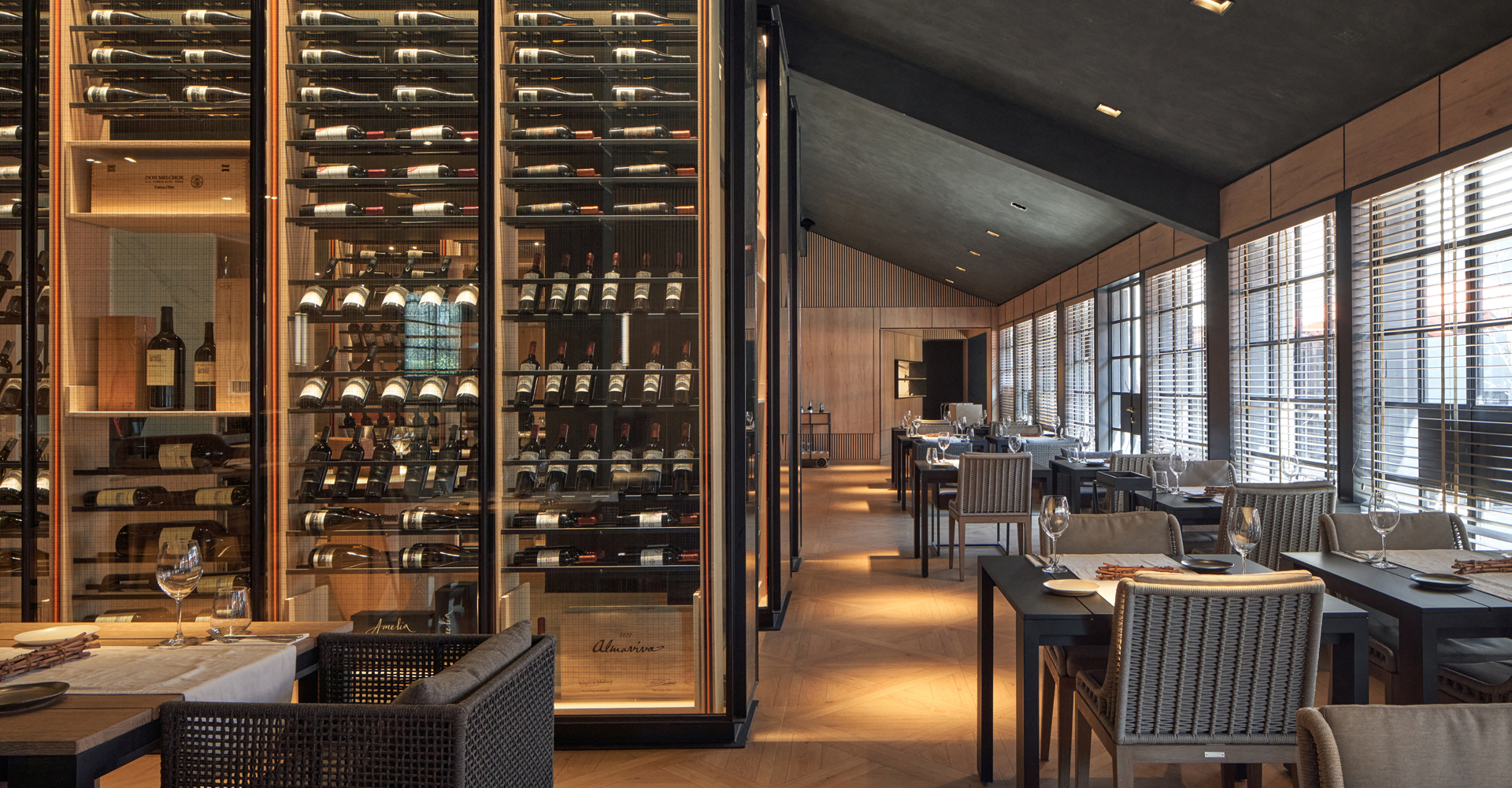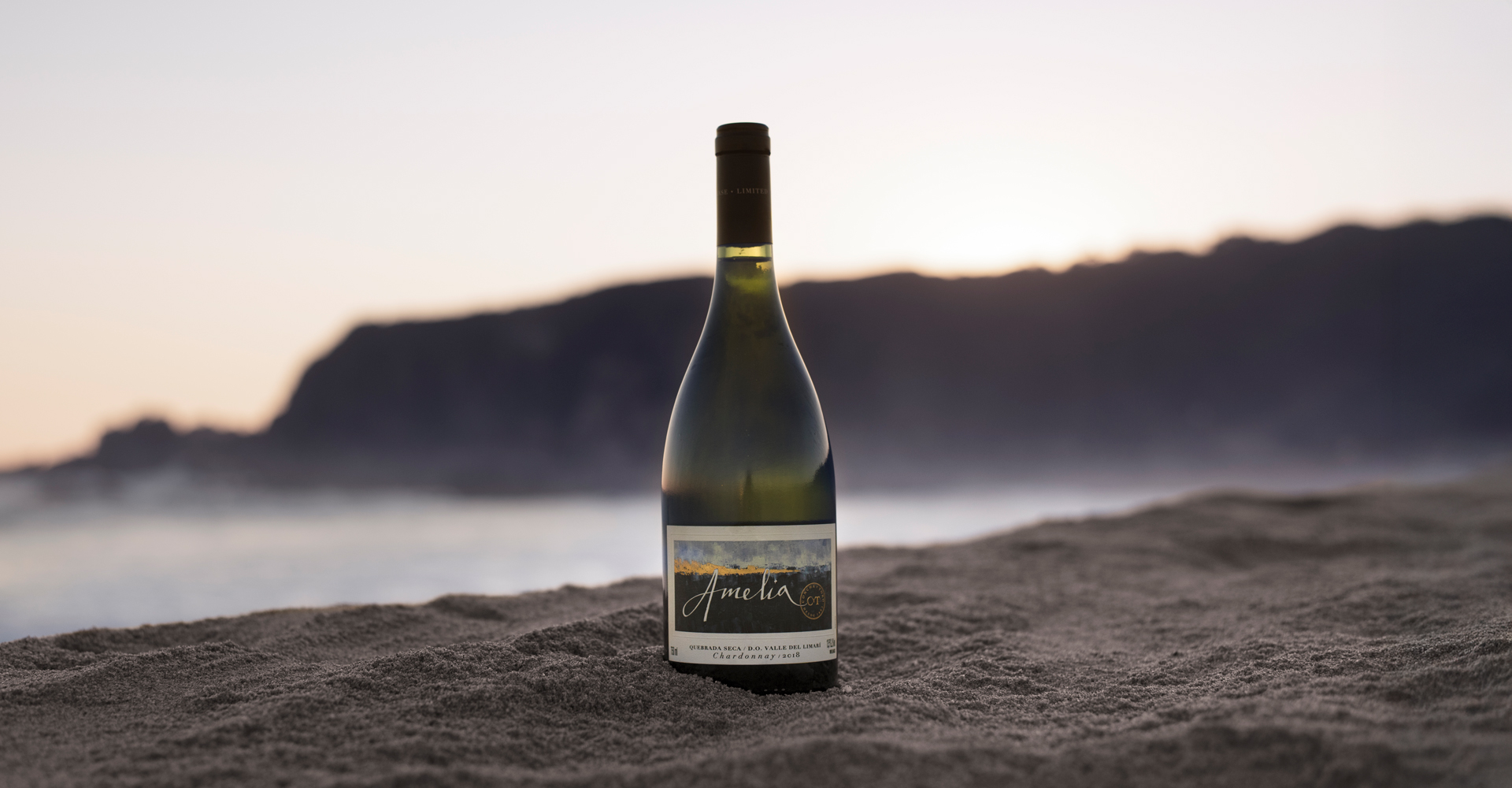29 de May de 2024
Chardonnay’s two versions: with or without wood?
Chardonnay is the world’s most popular white wine, and thanks to its prestige, it already has its very own date.
Every year, the last Thursday of May celebrates International Chardonnay Day. This grape variety originated in the French region of Burgundy, but due to its incredible versatility, its vinification process can occur in practically any wine-growing area. Its sturdy plant with green berries can adapt to any climate, while its neutrality makes it incredibly attractive to winemakers.
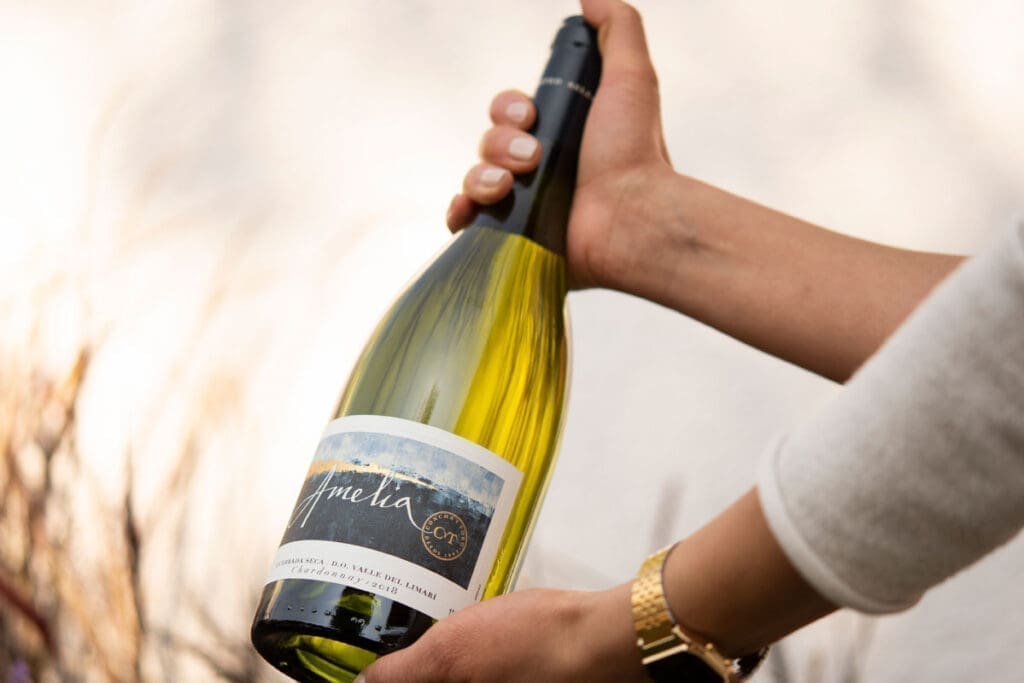
Chardonnay flavors range from citrus fruits such as lemon and green apple to tropical fruits such as pineapple and mango. It all depends on the climate in which it is grown and the date of harvest. Cooler temperatures and earlier harvests mean that the Chardonnay will be fresh and citrusy, like Amelia Chardonnay. As for warmer climates or late harvests, the fruit will be riper, and the wine will develop fruit flavors with more sweetness and less acidity. But beyond these characteristics, there are two very distinct styles of wine: one citrusy and the other creamy.
These Chardonnay profiles are basically due to human intervention in the winemaking process. The decision to use wood or not, either in fermentation or aging, is the reason this variety has two vastly different styles.
Chardonnay without wood

When it does not have wood, it is fermented and then stored in stainless steel tanks (or containers other than barrels), avoiding exposure to oxygen. This method allows the grape variety to reveal the expression it naturally brings from the vineyard. Its purpose is to emphasize acidity. These wines are very fruity and citrusy, even crisp. Aromas of lime, apple, peach, pineapple, mango, and sometimes floral notes are usually prominent. Their bodies are light, and their color is vibrant. We recommend drinking them young instead of storing them to enjoy the freshness that characterizes them. They should also be served very cold (at about 10 degrees C°) to accompany dishes such as white meats, seafood, pasta, and tomato-based recipes such as pizzas or eggplant lasagna.
Chardonnay with wood
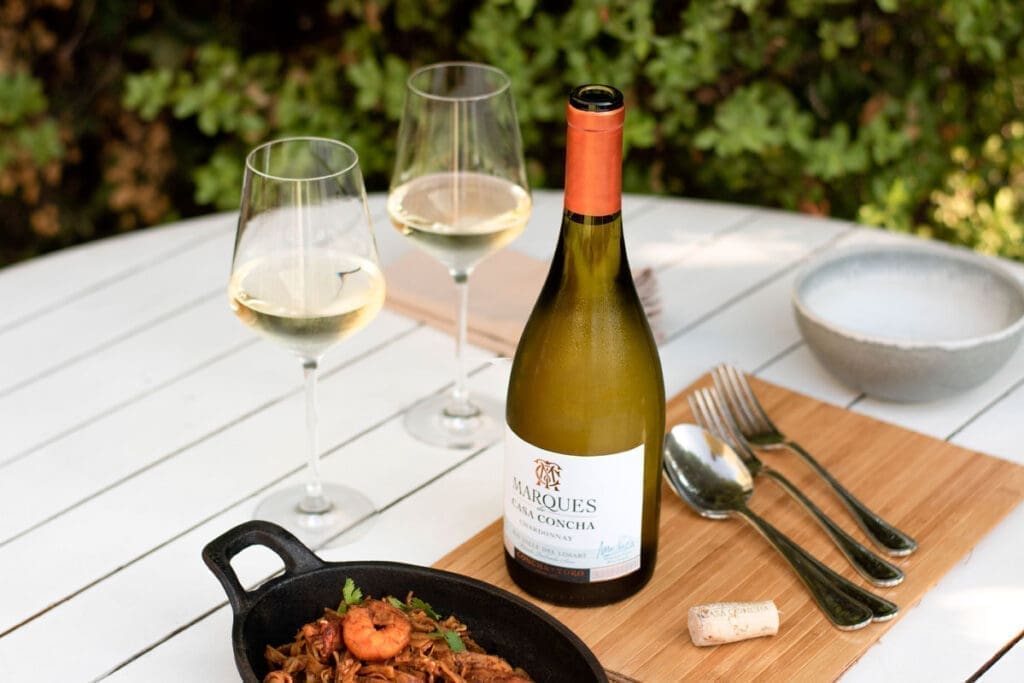
When we say that a Chardonnay has wood, it means that wood barrels are used in its fermentation, aging, or both processes. Wood allows the wine greater oxygenation, which gives it aromas of baked apples or dried fruits, to name a few, a round and creamy mouthfeel, and aromas of vanilla, coconut, and other spices. This type of Chardonnay also frequently undergoes malolactic fermentation (a process in which bacteria convert malic acid into lactic acid, reducing the acidity of the wines), which exacerbates its creamy profile, offering aromas and flavors of butter, hazelnuts, honey, and caramel. This style works well with white meat dishes such as chicken, pork, or fish, prepared with ingredients such as butter, cream, herbs, and mild seasoning. It also complements very well those toasted flavors of baked dough and caramelized vegetables.
Let’s toast this Thursday, May 30th with your favorite version of Chardonnay Concha y Toro.
